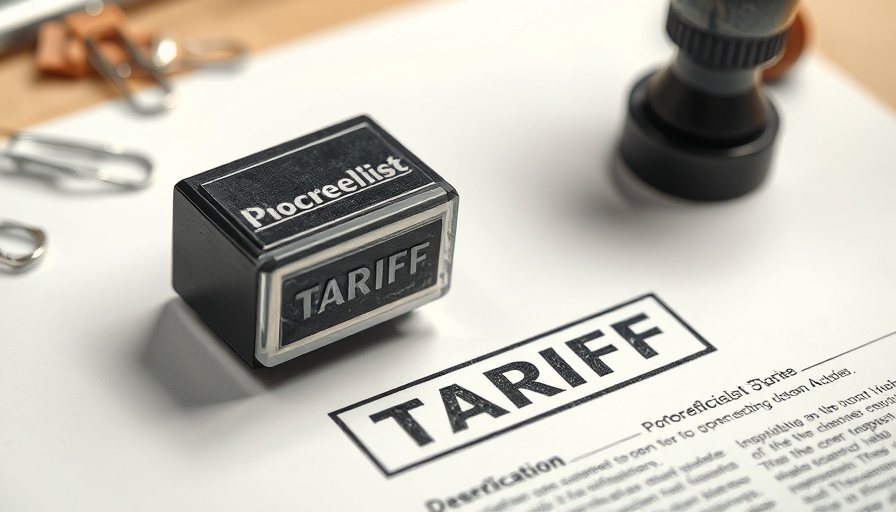
Understanding the New Tariffs Impacting the Optical Industry
As the optical industry prepares for new tariffs set to take effect in August, stakeholders are bracing themselves for cost increases that could ripple through the eye care sector. These tariffs primarily affect imports of optical products, which could lead to higher prices for both consumers and retailers alike.
What Do These Tariffs Mean for Consumers?
Tariffs, essentially taxes on imported goods, are intended to protect domestic industries by making imported products more expensive. For consumers, this means that eyeglasses and contact lenses may see price hikes due to the increased costs imposed on manufacturers and retailers.
As noted in previous discussions about tariffs, this isn't just about cost; it's about accessibility. Higher prices could deter some consumers from purchasing necessary optical aids, impacting their vision health and overall quality of life.
How Retailers Are Preparing for Price Increases
Retailers in the optical industry are actively strategizing on how to manage these impending cost increases. Many are exploring alternatives such as sourcing materials domestically, thus potentially circumventing some of the added costs from tariffs. Others are weighing the potential for promotional pricing or financing options to ease the burden on consumers.
Some optical businesses may face tough choices, including reducing overhead or adjusting their staffing to maintain profitability during challenging financial times.
The Broader Economic Context
These tariff increases aren't taking place in isolation; they are part of a broader economic strategy that has implications beyond the optical industry. For example, similar tariffs implemented across various sectors have generated debates about their effectiveness in bolstering domestic manufacturing versus the risks of inflation and reduced consumer spending.
Experts believe that while tariffs may provide short-term protection for some industries, the long-term impact could lead to job losses and economic uncertainty for others, including logistical and supply chain disruptions that can affect not only pricing but product availability.
Consumer Awareness and Advocacy
For consumers, being informed is crucial. Awareness of these changes enables individuals to voice concerns to local representatives and advocate for policies that protect both their right to affordable healthcare and the integrity of the optical market.
Individuals in the optical community—clinics, eyewear retailers, and suppliers—should come together to discuss the implications of tariffs and how they can jointly navigate these challenges to sustain a healthy marketplace.
Future Considerations for the Optical Industry
Looking forward, industry insiders are focused on adaptability. Whether through innovation in product design or exploring new manufacturing partnerships, the optical sector must evolve to withstand economic pressures. Moreover, continuing dialogue between manufacturers, retailers, and consumers will be vital in shaping a resilient response to tariff-induced challenges.
In essence, while tariffs aim to protect domestic interests, their broader implications warrant careful consideration. Stakeholders must collaborate to ensure that the optical industry remains vibrant and accessible for all.
 Add Row
Add Row  Add
Add 




 Add Row
Add Row  Add
Add 








Write A Comment